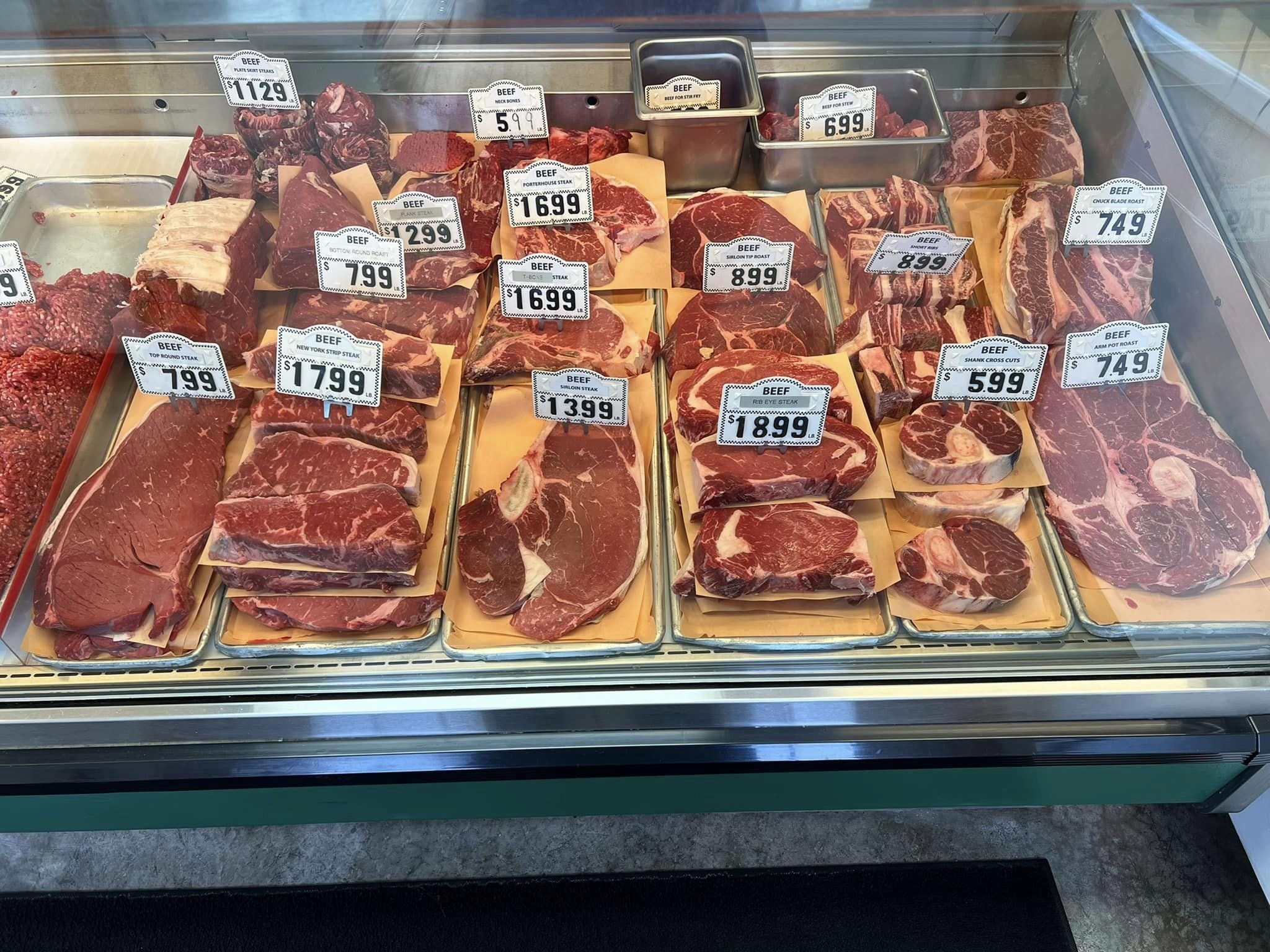Stop by Bagley Meat Market Edwardsville IL for custom cuts and high-quality meats.
Stop by Bagley Meat Market Edwardsville IL for custom cuts and high-quality meats.
Blog Article
How to Pick the Perfect Cut of Meat From a Trusted Meat Market
Picking the perfect cut of meat from a trusted meat market calls for a thoughtful approach that stabilizes high quality, culinary objective, and budget. Comprehending the numerous sorts of meat and their respective cuts is vital, as is engaging with your butcher to gain insights right into sourcing and preparation. Observing attributes such as color, structure, and marbling can better lead your choice. As you think about these aspects, it becomes clear that the subtleties of your choice might significantly affect the outcome of your dish, motivating a deeper exploration of the standards that truly matter.
Understanding Meat Cuts


For instance, the tenderloin is treasured for its buttery appearance and very little connective cells, making it suitable for fast food preparation techniques such as barbecuing or pan-searing. On the other hand, tougher cuts like the brisket or shank take advantage of slow-moving food preparation methods to break down collagen, generating rich and flavorful results.
In addition, the fat content of a cut plays an essential duty in flavor profile and dampness retention throughout food preparation. Cuts with higher fat web content, such as ribeye, provide an even more robust taste, while leaner choices, like sirloin, may call for careful preparation to avoid dry skin (bagley meat market edwardsville il). Recognizing these subtleties allows for notified selections that elevate culinary productions, making sure that each dish showcases the most effective qualities of the chosen meat
Factors to Take Into Consideration
When choosing the perfect cut of meat, a number of important elements enter play that can substantially affect the last dish. First and leading, take into consideration the sort of meat you desire-- beef, pork, lamb, or chicken-- as each deals distinct tastes and textures. The particular cut within that group is equally crucial; for circumstances, ribeye delivers rich marbling, while tenderloin supplies a lean, buttery appearance.
Another factor is the cooking approach you prepare to utilize. Cuts suitable for barbecuing, such as T-bones or sirloins, differ from those much better matched for slow cooking, like chuck roasts or shanks. In addition, freshness is paramount; constantly choose meat with a dynamic shade and company texture, signifying quality and proper handling.
Premium cuts may supply exceptional preference, but there are also cost-effective alternatives that, when prepared properly, can generate delicious results. Stabilizing these variables will certainly aid you pick the excellent cut for your cooking requirements.
Concerns to Ask Your Butcher
A butcher's knowledge can be indispensable when selecting the optimal cut of meat for your culinary ventures. Start by asking regarding the resource of the meat.
Next, inquire about the various cuts readily available for the kind of meat you like. An educated butcher will certainly clarify the nuances of each cut, aiding you select one that matches your food preparation approach and desired result. Do not wait to ask about the best cooking methods for a specific cut; butchers commonly have pointers that can enhance your dish.
It's likewise prudent to ask regarding the meat's quality. A good butcher will certainly be anxious to share their proficiency and suggest cuts that will certainly thrill your taste buds. Engaging your butcher with these questions can significantly improve your meat option experience.
Identifying High Quality Meat

Structure is an additional crucial variable; quality meat need to feel solid and slightly springy to the touch. Prevent any cuts that really feel slimy or excessively completely dry, as these can indicate wasting or incorrect storage. In addition, scent plays an essential function; fresh meat should have a tidy, neutral aroma, while any type of repulsive or sour odors are warnings.
Last but not least, think about the resource. Buying from a credible meat market, where the meat's origin is recognized, can make sure better criteria. By concentrating on these indicators-- shade, marbling, structure, scent, and source-- you can with confidence pick cuts that will elevate your cooking and dining experience.
Food Preparation Approaches for each and every Cut
Choosing the best food preparation approach is vital for making best use of the taste and inflammation of each cut of meat. Different cuts possess one-of-a-kind characteristics that dictate the most suitable cooking methods.
For tender cuts, such as filet mignon or ribeye, dry warm methods like cooking, broiling, or pan-searing are perfect. Alternatively, tougher cuts, such as chuck or brisket, benefit from damp warm techniques, including braising or slow-moving food preparation.
Pork chops and hen breasts are versatile and can be cooked utilizing both completely dry and wet methods. a knockout post While barbecuing or roasting can yield delicious outcomes, poaching or sautéing can preserve dampness and tenderness. For lamb, methods like roasting or braising are suggested, as they complement the meat's durable taste.

Final Thought
To conclude, selecting the suitable cut of meat from a trustworthy meat market requires a detailed understanding of meat cuts and factor look at this web-site to consider of numerous elements, consisting of resource, quality, and food preparation approaches. Engaging with the butcher with targeted queries can yield beneficial understandings and recommendations tailored to certain cooking requirements. Prioritizing both quality and spending plan will boost the general gastronomic experience, guaranteeing that the chosen cut meets assumptions in both flavor and preparation.
Report this page